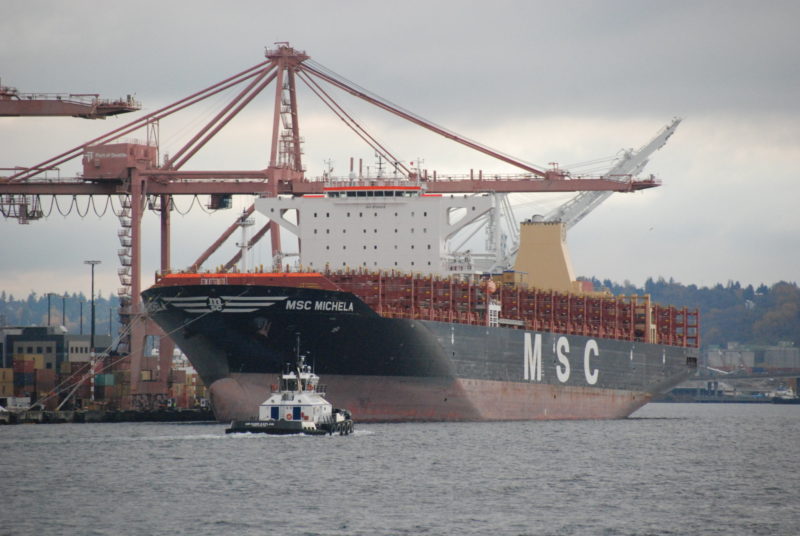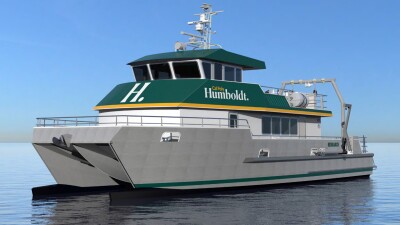The King County Maritime Economic Forecast is a highlight at the annual Pacific Marine Expo. Steve Metruck, executive director of the Port of Seattle, came today with a shopping list for the next five years.
“Where you place your money is what’s important,” said Metruck, who served 34 years in the Coast Guard, retired as a rear admiral, and used to be captain of the port here before he was a chief financial officer for the service. In his new job, Metruck is planning a proposed budget with a $623 million, five-year capital improvement plan.

Port of Seattle executive director Steve Metruck. Kirk Moore photo.
It includes $340 million to consolidate cargo handling and improvements at Terminal 5 on Harbor Island, to handle the new generation of ultra-large container vessels. Another $100 million is marked for building the port’s accommodations for cruise ships, which Metruck says was an insignificant sector here back in 2000.
Along with cruise terminal investments, port officials are planning a $24 million project to install shore power at Pier 66 plus $6 million to explore wider electrification of the port – increasingly demanded by community health, neighborhood and environmental groups in major cruise port cities to cut air emissions from vessels at dockside.
This will be a first step toward “decarbonization and moving toward zero emissions for our waterfront,” said Metruck.
This is a big part of the future for Washington state’s maritime economy. The Washington State Ferry system is looking to convert its largest vessels to hybrid diesel-electric power. Public sector planners, and designers and shipbuilders from private industry, have been visiting Norway and other European nations where electric ferries and hybrid drive systems are becoming part of the maritime mainstream.
“This is the infrastructure you need to do this,” Metruck told the audience at the morning event.
Liquified natural gas (LNG) is the other emerging maritime power source in the Northwest, with TOTE Maritime Alaska in the process of converting its Orca-class con/ro vessels to dual-fuel capability.
The company chose LNG as the best long-term strategy to comply with the U.S. Environmental Protection Agency’s 2012 emission control rules for bluewater shipping, said Grace Greene, president of TOTE Maritime Alaska.
“It’s the cleanest of all the alternatives, it meets all future emission requirements,” said Greene. Some conversion work is already underway, with the North Star scheduled for drydock in winter 2019, and TOTE will have a cryogenic pipeline from a Puget Sound Energy LNG plant next door to the Tacoma container terminal ready in late 2020.





